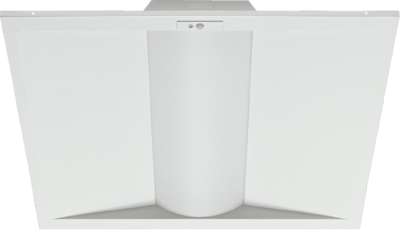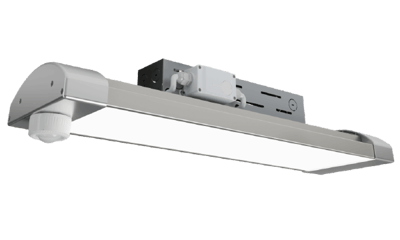 The Internet of Things (IoT) emerged on the scene in 2008 with enormous potential to unite building systems, fixtures and devices via an intelligent mesh network that would transform lighting, air quality, energy use and so much more. Sensors located throughout a building to collect mountains of data would enable companies to catapult their energy efficiency to new levels and even help contribute to the productivity of their employees.
The Internet of Things (IoT) emerged on the scene in 2008 with enormous potential to unite building systems, fixtures and devices via an intelligent mesh network that would transform lighting, air quality, energy use and so much more. Sensors located throughout a building to collect mountains of data would enable companies to catapult their energy efficiency to new levels and even help contribute to the productivity of their employees.
The possibilities were incredible. But has IoT delivered on its many promises? And is it what most LED upgrade customers truly need?
We spoke with Danny Krueger, CEO of energy performance solutions provider IoEnergy, about where his customers stand on smart lighting and where LED companies should focus their efforts for maximum return on investment.
Complexity and ROI in IoT Lighting
Even pre-pandemic, extensive smart building installations were speculative, requiring massive investments for uncertain returns. Then the pandemic changed the way people use commercial spaces, and this put the brakes on many company’s plans for future investments in their facilities.
Another reason why a big investment is tough to sell right now is because the ROI only emerges over time. That’s not to say there’s no immediate benefit to investing in IoT in a facility; smart building data can be used to control lighting, thermal comfort, air quality, physical security, sanitation and more in a way that makes occupants more productive, lowers costs and improves the building’s environmental impact. As Krueger told us, “Once you unlock a building's data from a network of sensors, it's going to be a watershed moment.”
But here’s the snag: Significant upfront investment is required to create the networks needed to capture this data, and the full ROI won’t be realized until data is analyzed and applied to building management – which can take a while, depending on the client.
Smart LED Lighting Value From Day One
Does that mean there’s no opportunity in smart LED lighting? Far from it! But LED lighting fixtures with plug-in smart sensors may be a more attractive alternative for your customers. These simpler, non-network installations are a step in the direction of the ultimate smart building — without the huge upfront investment.
“The reality is, I’m not typically talking to an IT department analyzing how people use a building. I'm still talking to a VP of real estate or a CFO, and that conversation is still about ROI,” explained Krueger.
LED lighting equipped with smart features can provide a middle ground for business owners or facility managers who want more advanced controls and energy savings but for whom a full IoT system might be overkill.
Even without all the futuristic possibilities, sensor-enabled LEDs offer advanced capabilities that customers see value in right now:
Bluetooth control: Rather than operating fixtures individually with switches throughout the building, smartphone apps and other connected devices give users the opportunity to control single fixtures or groups of fixtures from a single place.
Occupancy sensing: Much of the energy wasted by large facilities results from lights left on when no one needs them. With motion or occupancy sensors, lights can switch themselves off automatically when no one is detected in the room.
Daylight harvesting: Many buildings have large windows that let in a lot of natural daylight. Smart illumination systems can detect this light and adjust the artificial illumination accordingly, ensuring no unnecessary energy is wasted.
Time scheduling: Facility managers can schedule lights to be turned on only during specific hours. This prevents lights from staying on accidentally when no one is present.
Group editing: Older lighting systems require large groups of lights to be on or off at the same time, regardless of how many are actually required. Smart lighting solutions, however, allow for each fixture to be controlled independently. Businesses can create an appropriate lighting plan for every room, aisle, or area and adjust those fixtures all at once rather than individually.
Scene selection: The ability to control the brightness and intensity of each LED means employees can illuminate each space according to need. This means employees can choose pre-programmed scenes based on how that space is being used at that time, such as for meetings or presentations.
Functions like these yield important energy savings customers want without the massive price tag.
Smart LED Lights for Today and Tomorrow
Sensors let LED fixtures deliver much of the smart functionality your customers associate with the IoT future, but much more economically than your customers might have hoped. Litetronics has innovative and proven options you can rely on for your next smart lighting installation.
LED Volumetric Troffers
Our LED Volumetric Troffer maximizes energy savings while improving the occupant experience with capabilities that include:
 Bluetooth control via the LiteSmart mobile app
Bluetooth control via the LiteSmart mobile app- Occupancy sensing
- Daylight harvesting
- Time scheduling
- Group editing
- Scene selection
LED High Bays
 We’ve also upgraded our High Bay products with sensing technology. Both the LED Linear High Bays and LED Round High Bays come with a pluggable sensor port that makes it easy to add an occupancy or daylight sensor. A smart passive infrared (PIR) sensor allows high-bays to be controlled via the LiteSmart mobile app.
We’ve also upgraded our High Bay products with sensing technology. Both the LED Linear High Bays and LED Round High Bays come with a pluggable sensor port that makes it easy to add an occupancy or daylight sensor. A smart passive infrared (PIR) sensor allows high-bays to be controlled via the LiteSmart mobile app.
 One benefit of light control via the app is team management. While reserving most controls for admin level users, you can offer limited options to guests to control actions like on/off, dimming and switching between scenes. That brings the benefit of upgraded LED lights directly to the employee level, which can improve their mood and opinion of the facility.
One benefit of light control via the app is team management. While reserving most controls for admin level users, you can offer limited options to guests to control actions like on/off, dimming and switching between scenes. That brings the benefit of upgraded LED lights directly to the employee level, which can improve their mood and opinion of the facility.
IoT Lighting ROI Delivered – Differently
We can look forward to the exciting possibilities IoT technology and the insights the data from sensors will offer some day. “But for now,” as Krueger put it, “The case for a sophisticated, smart building installation is very narrow, because the return on investment just isn’t there.”
In the meantime, LED lighting companies can offer their customers smart capabilities that have a significant impact on energy efficiency and employee productivity – but with pluggable sensors that are cheaper and easier to install and use.
Proving ROI will always be the key to securing LED upgrade projects. If you’re looking for sure-fire methods to win over customers, be sure to check out our e-book: How to Sell a Skeptical Customer on LED Lighting by Proving ROI.

